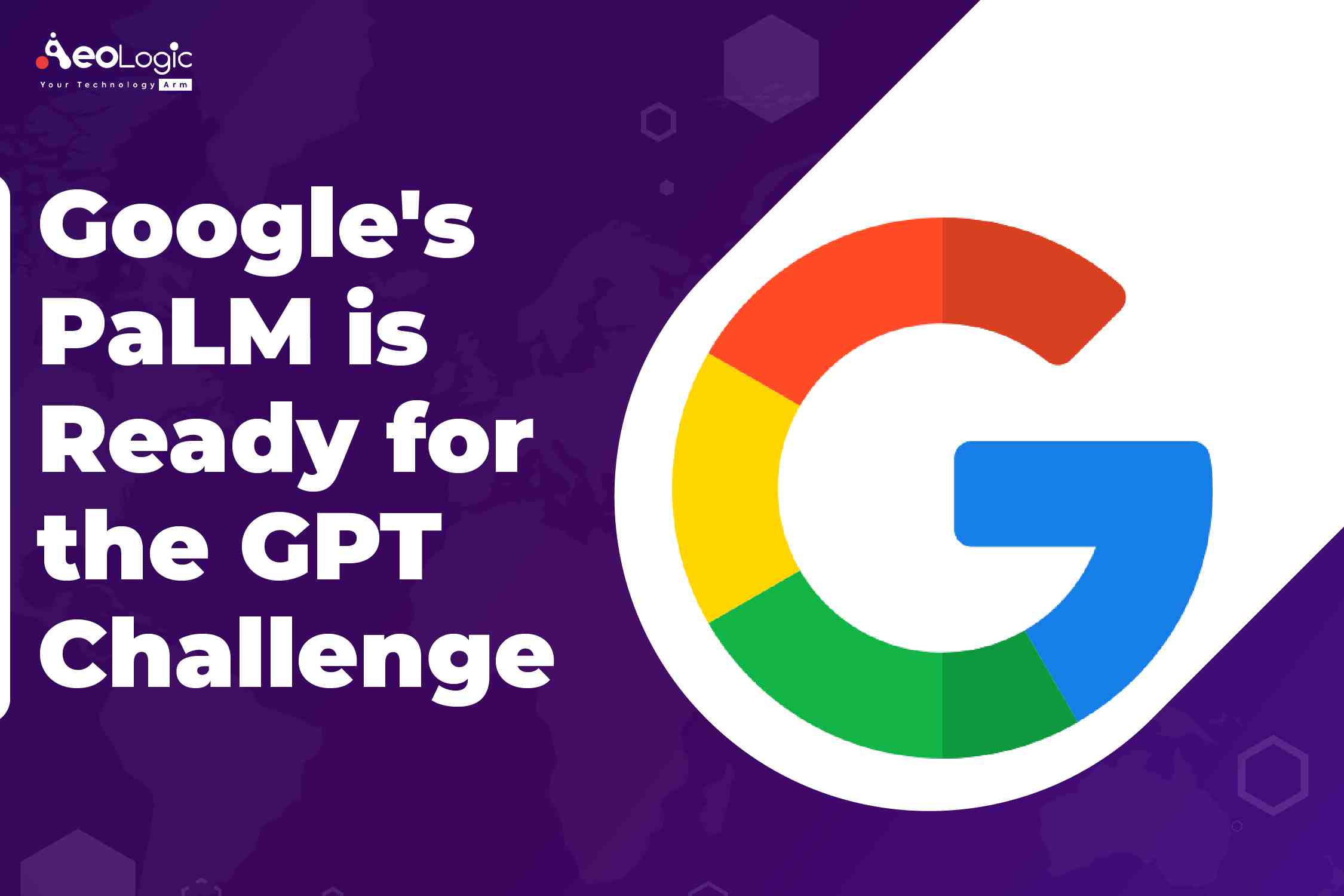Google is taking up the GPT challenge to build a natural language processing (NLP) system that can generate human-like text. The company has developed PaLM, its own language model. One of the most powerful yet, that can generate creative and convincing text without supervision. The model was trained on a massive amount of text from Google Books and Wikipedia to understand complex relationships between words and phrases. With PaLM, Google is hoping to create a new era in NLP technology where machines can understand language as deeply as humans do. In this blog post, we’ll explore whether google’s paLM is ready for the GPT challenge.
What is Google’s PaLM?
Google’s PaLM is a new machine learning platform that is designed to improve the efficiency of training models for Google’s products. The platform is based on the TensorFlow open-source library and enables developers to train and deploy models faster. Google has been working on the platform for several years and it is now available to all developers.
Also Read: Comparison Between ChatGPT and Google AI Application
What is the GPT Challenge?
The GPT Challenge is a competition organized by Google to encourage researchers to develop natural language processing systems that can accurately generate text. The goal is to create a system that can generate text that is indistinguishable from the human-written text.
The competition is open to anyone with an interest in natural language processing and machine learning. To participate, you must submit a model that meets certain criteria. Once your model is accepted, it will be evaluated on a set of test data. The winner of the GPT Challenge will be the team or individual with the best-performing model.
How is Google’s PaLM Different From other Machine Learning Models?
PaLM is a new machine learning model developed by Google. It is different from other machine learning models in several ways.
First, Google’s PaLM uses a novel architecture that allows it to scale to very large datasets. Other machine learning models tend to struggle when faced with large datasets.
Second, PaLM is designed to be more efficient than other models. It can learn from data faster and requires less data to achieve the same performance levels.
Third, Google’s PaLM is more robust than other models. It is less likely to overfit on training data and can better handle noisy or difficult data.
Overall, PaLM represents a major advance in machine learning technology. It promises to be more accurate and efficient than existing models, while also being more scalable and robust.
Why is the GPT Challenge Important?
As artificial intelligence (AI) continues to evolve, so too does the challenge of creating algorithms that can learn and adapt like humans. The Google AI team recently announced the PaLM Challenge, which aims to further advance machine learning by incentivizing participants to create AI models that can efficiently learn from a small amount of data.
The GPT Challenge is important because it will help push the boundaries of what AI is capable of. By encouraging researchers to develop AI models that can learn from less data, the challenge will ultimately lead to better and more efficient AI algorithms. In addition, the GPT Challenge will also help bring about new applications for AI technology.
Also Read: The Top 10 Ways ChatGPT Can Help You Succeed in Business
What are the Potential Applications of Google’s PaLM?
The potential applications of PaLM are two-fold.
PaLM has the potential to improve the performance of Google’s existing products and services in a number of ways. For example, it could be used to speed up search engine algorithms or to improve the accuracy of results returned by Google Maps. In addition, PaLM could be used to develop new features for existing products, such as a better user interface for Google Docs.
Secondly, PaLM could be used to develop entirely new products and services. For example, it could be used to create a natural language processing system that can understand human speech with near-perfect accuracy. Alternatively, it could be used to develop a machine-learning system that is able to identify patterns in data sets that are too large for humans to process. The possibilities are endless. It all depends on what Google decides to do with this technology.
Also Read: Chatsonic: The Next Big Thing in Chatbot Technology
Conclusion
Google’s PaLM is a major step forward in the field of natural language processing. It has already shown promise in its ability to beat out most other existing models on certain tasks and is set to become an increasingly important tool for AI researchers. With the GPT-3 challenge looming on the horizon, it will be interesting to see if Google can develop this technology even further and use it to achieve breakthroughs in artificial intelligence.
If you are planning to integrate technology into your business, our experts can help you materialize your vision. Please get in touch with us.
Related Blogs:
- How AI/ML Can Change the Public Transportation Industry
- Transforming Business With Digital Technology in the Oil Palm Industry in India
- Importance of Digital Asset Management in the Retail Industry
- How AI is Transforming the Agriculture Industry
- 10 Ways to Use Artificial Intelligence to Improve Business Processes
- The Future of IoT Technology in Convenience Stores
- Building Manufacturing Resilience Through AI and ML

I’m Deepika Pandey, an SEO strategist and content writer with 6+ years of experience. I create SEO-friendly content that drives traffic and engages readers. I combine data insights with creativity to help businesses grow their online presence effectively.






